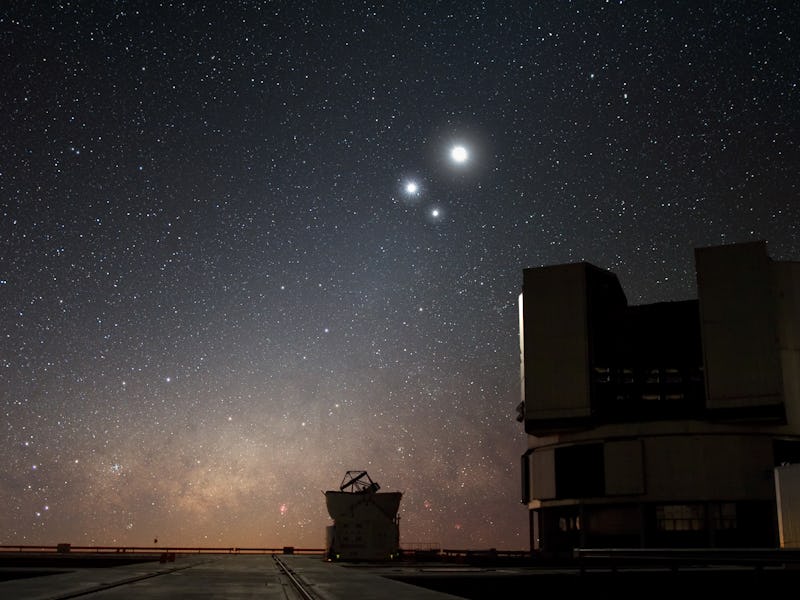Venus Will Appear Less Than an Inch From the Moon — Here’s How to Watch

It’s hard to keep up with all of the celestial events happening in July. This month has already seen a partial solar eclipse and is slated for a total lunar eclipse, the Delta Aquarid Meteor Shower, the longest-ever Blood Moon, and Mars in opposition. If that’s not enough, go outside on Sunday night when Venus will look as though it’s about to collide with the moon.
Venus lit up the sky on Monday after it aligned with Regulus, the blue-white star that appears the brightest in the constellation Leo. On Sunday, the “morning star” will continue its tour of creating photo-worthy moments once it cozies up to the moon, appearing as close as a half-degree from the lunar crescent, or roughly the width of a finger at arm’s length.
The moon moves approximately 13 degrees eastward relative to Earth’s sky every 24 hours, which will soon carry it to its closest point with Venus. The morning star will gleam at a magnitude of -4.2, making it the brightest object in the sky after the sun and moon. At just a half-degree away from the each other, the pair is expected to create a bright location in the sky, beginning just 30 minutes after sunset.
With the new moon less than three days old, it will appear as a razor-thin crescent that will intensify the already dramatic skyscape. Although the moon will only be 12 percent illuminated on Sunday, its dark region is expected to reflect earthshine, a faint glow caused by light’s reflection off Earth, and will thus still be somewhat visible. Telescopes and binoculars would come in handy for this scene, but the celestial pairing will be visible to the naked eye as well.
To see the pair at their brightest, look towards the west around 9:45 p.m. local time. Don’t be late, however, since Venus will set around 10:30 p.m. During twilight, Regulus will also be visible to the lower right of the moon and Venus, while Mercury will make an appearance much closer to the horizon. The further west a stargazer is in North America, the closer Venus and the moon will appear, though the difference will seem like half a degree.
While it might look as though Venus and the moon are on a crash course for each other, that doesn’t reflect what’s happening in orbit. Whereas the moon will be 224,000 miles from Earth at its closest point, Venus is nearly 400 times farther away. Their meeting might be a relative illusion, but at least the photos will be real.